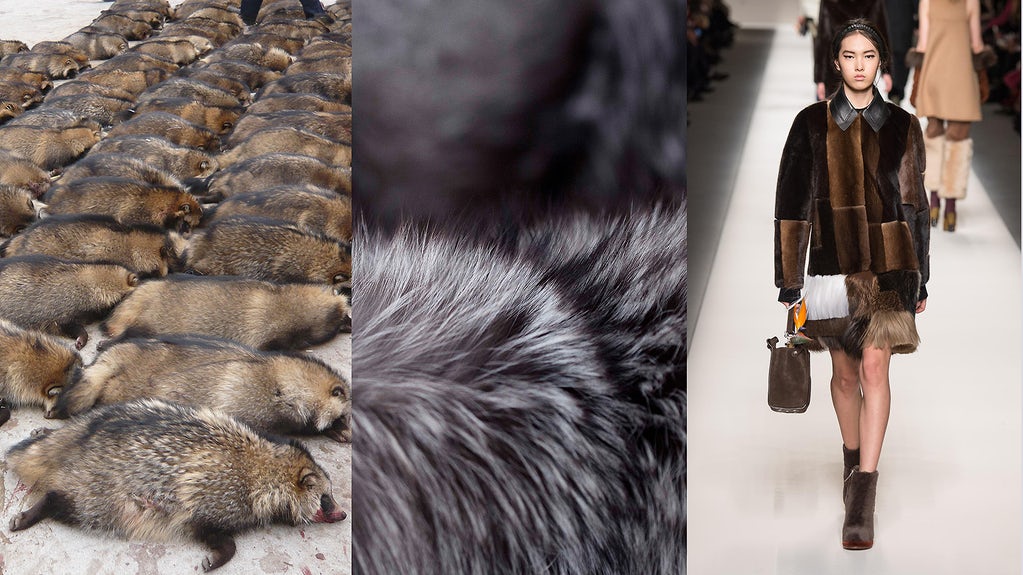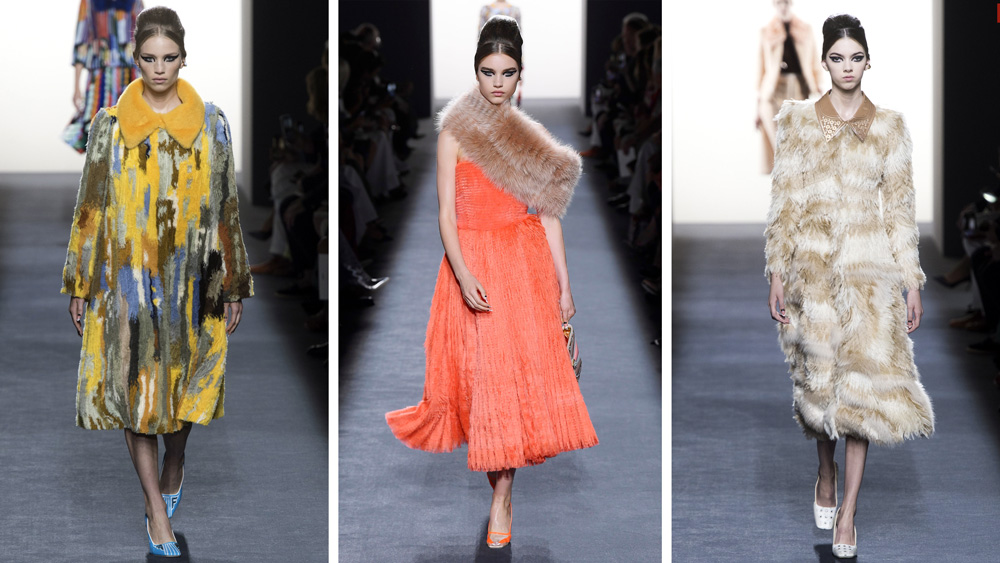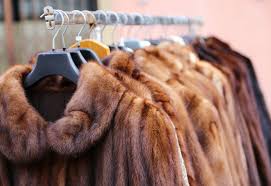
Denmark's COVID driven mink cull has put the Fur Industry Statistics 2020 out of turn, with industry authorities expecting style houses like Louis Vuitton, Dior, and Fendi to eat up fox and chinchilla to fill the hole.
The worldwide Fur Farming Industry, worth more than $22 billion per year, is faltering from Denmark's choice to murder 17 million cultivated mink after virus outbreaks at hundreds of farms prompted the disclosure of another strain COVID in the mammals.
Stresses of an unexpected deficiency of smooth mink pelts, Denmark was the top exporter, have lifted costs by as much as 30% in Asia, the International Fur Federation says.
Presently, everyone's eyes are on Finland, where million mink and 250,000 fox pelts will before long be available to all for purchasers in Korea, China, the US, and elsewhere next week. Auction firm Saga Furs intends to hold the worldwide deal, the first since the Danish winnow, using Livestream from 15 December.
A year ago, Saga Furs assumed control over its North American rival NAFA, hopes to sell all the pelts, contrasted and a 55% take-up so far in 2020 because of the Covid emergency.
“The market will fortify; an expansion in costs will assist our business with generaling,” Saga Furs CEO Magnus Ljung said of the business, which has seen years of falling prices. “We've just had more demands about foxes; if individuals see that there is an absence of mink, they could consider utilizing something different,” Ljung told Reuters.
LVMH's head of maintainability, Helene Valade, said for the current week that the French luxury bunch gets to hide from Finland. The proprietor of Louis Vuitton, Dior, and Fendi, which depends on dealers to offer, says it is utilizing just 100% ensured mink, fox, and finnraccoon.
Fur Industry Cruelty has been falling since the 1950s, except an ascent somewhere in the range of 2000 and 2013 when it was famous on design runways and Chinese hunger for luxury pelts blast, Lise Skov, a scholastic who investigated the Danish Fur Industry Statistics 2020, said.
An ordinary mink pelt sold for more than $90 at closeout in 2013, while a year ago's skins got around $30. Despite a fall in worldwide creation to just under 60 million pelts a year ago, from more than 80 million in 2014.
Euromonitor predicts the estimation of the fur and Fur Farming Industry, both genuine and fake, will fall by 2.6% this year.
Political Crisis of Fur Industry Facts
The government's treatment of the emergency has drawn judgment from a unified parliament. Frederiksen's order to wipe Denmark's whole mink populace did not have a legitimate command, constraining the public authority to refocus and draft a crisis bill. That failed to win the 3/4 parliamentary support expected to pass, and the authoritative cycle is currently in an in-between state.
Mink represents about 0.7% of Danish fares and utilizes approximately 3,000 individuals in the country. Officials are presently dealing with a salvage bundle for Denmark's mink industry, which may be just about as large as $2.2 billion, as indicated by telecaster TV2.
Tage Pedersen, the chairman of the Danish Fur Breeders' Association, which possesses Kopenhagen Fur, disclosed to Bloomberg earlier this week that the government’s choice to arrange a mass cull means there's “no chance to get back” for the Fur Industry in Canada. “Regardless of whether a couple of farmers some way or another make due, there's still no future.”
Frederiksen's administration, which anticipates that a standard bill should pass with an essential more significant part of over half, needs all Danish mink cultivating to be prohibited until 2022. That implies reproducing animals will be cleared out, successfully covering the business for good.

Fur Industry Statistics 2020 Emissions
But, in a report on mink creation's environmental effect, fur contrarily affects 17 out of 18 ecological regions contrasted with common elective materials like cotton and polyester.
The territories of concern included environmental change, eutrophication, and harmful outflows. For as far as anyone knows common material, these outcomes show that cultivated fur is not anymore feasible than materials produced using petroleum.
With up to 300 animals slaughtered for one fur garment, there is no simple method to discard such colossal amounts of dead animals.
Both burning and entombment produce immense amounts of destructive poisons that contaminate the air. Many of the substances used to hold fur back from decaying over the long haul are likewise exceptionally poisonous and have been appeared to poison rivers and streams.
Synthetic choices are not precisely ideal substitutes. Yet, the emissions associated with fur – manure runoff into lakes and streams and the poisonous synthetics used to look after fur – prove that fur is indeed far more detestable.
Fur-Free Future
It's bewildering that executing more than 200 chinchillas for one coat can be considered supportable.
The fur exchange is already restricted in numerous nations in Europe, including Ireland, Norway, Belgium, Germany, Slovakia, and the United Kingdom.
The cull in Denmark in progress. The Netherlands and Poland, other large supporters, are required to close down all activities throughout the next year. France is to end mink cultivating by 2025. Furthermore, the UK Government has vowed to boycott fur imports and deals after the Brexit progress period ends in December.
So, could this imprint the starting to an end of the fur business?
The gitch is that while Europe is setting a fur-free precedent, China's industry is discreetly developing fortitude, as indicated by a report by ACTAsia in 2019.

Pompom
China isn't just the greatest fur-handling country on the planet yet; also the most significant worldwide purchaser and shopper because of the supported ubiquity of real fur garments of clothing in the country. Single-handedly, it can lead and stimulate the worldwide fur trade.
Therefore, changing purchaser behavior and diminishing demand in the New China Luxury Market is vital to stopping the worldwide business.
When buyers were presented with facts about cultivating fur, between 60% and 80% proclaimed they would move away from fur pieces of clothing and accessories, as per an educational survey conducted by ACTAsia.
This gives a helpful sign of the massive effect that education projects can have on public views of fur and customer behavior in China.
Even as the prominence of full fur garments in Europe decays, fur trim utilized for hoods, collars, pompoms, and accessories is getting perpetually famous.
Education
Trim is not, at this point, an offcut from a luxury fur coat, yet it is currently a trend that is serious enough to sustain a growing industry.
As well as teaching customers, we need to drive more fashion retailers to join the Fur Free retailer plot.
Many style planners and brands, including Gucci, Prada, Coach, Michael Kors, Ralph Lauren, Giorgio Armani, Calvin Klein, Burberry, and Versace, have just quit utilizing fur. This is undoubtedly a phase in the right way.
Coronavirus has demonstrated that when it's adequate to cram thousands of animals in small spaces is finished.
Not exclusively do the animals suffer; however, it's a long way from sustainable, and farms are the right places for new illnesses. Education is vital to a long-term shift in behavior.
